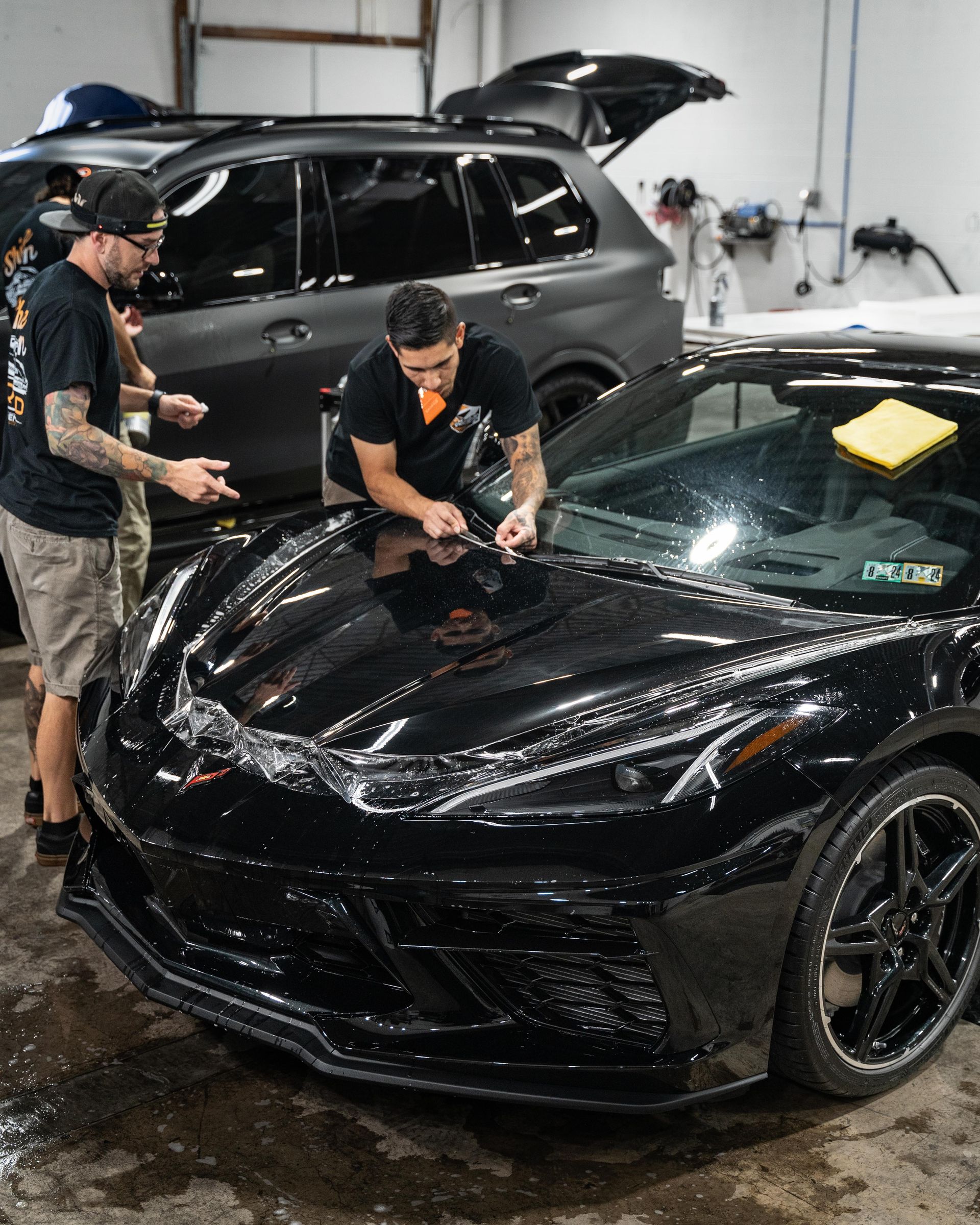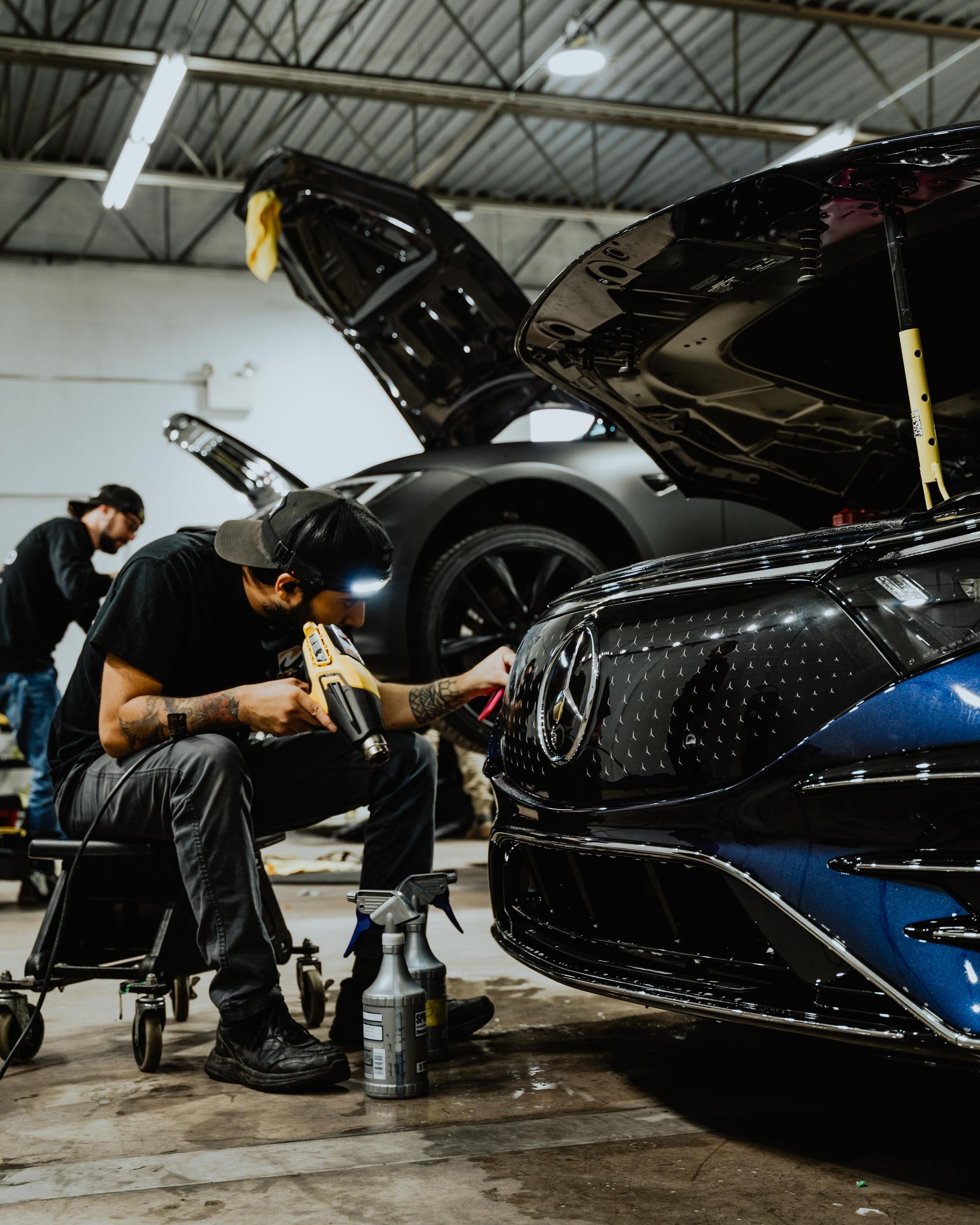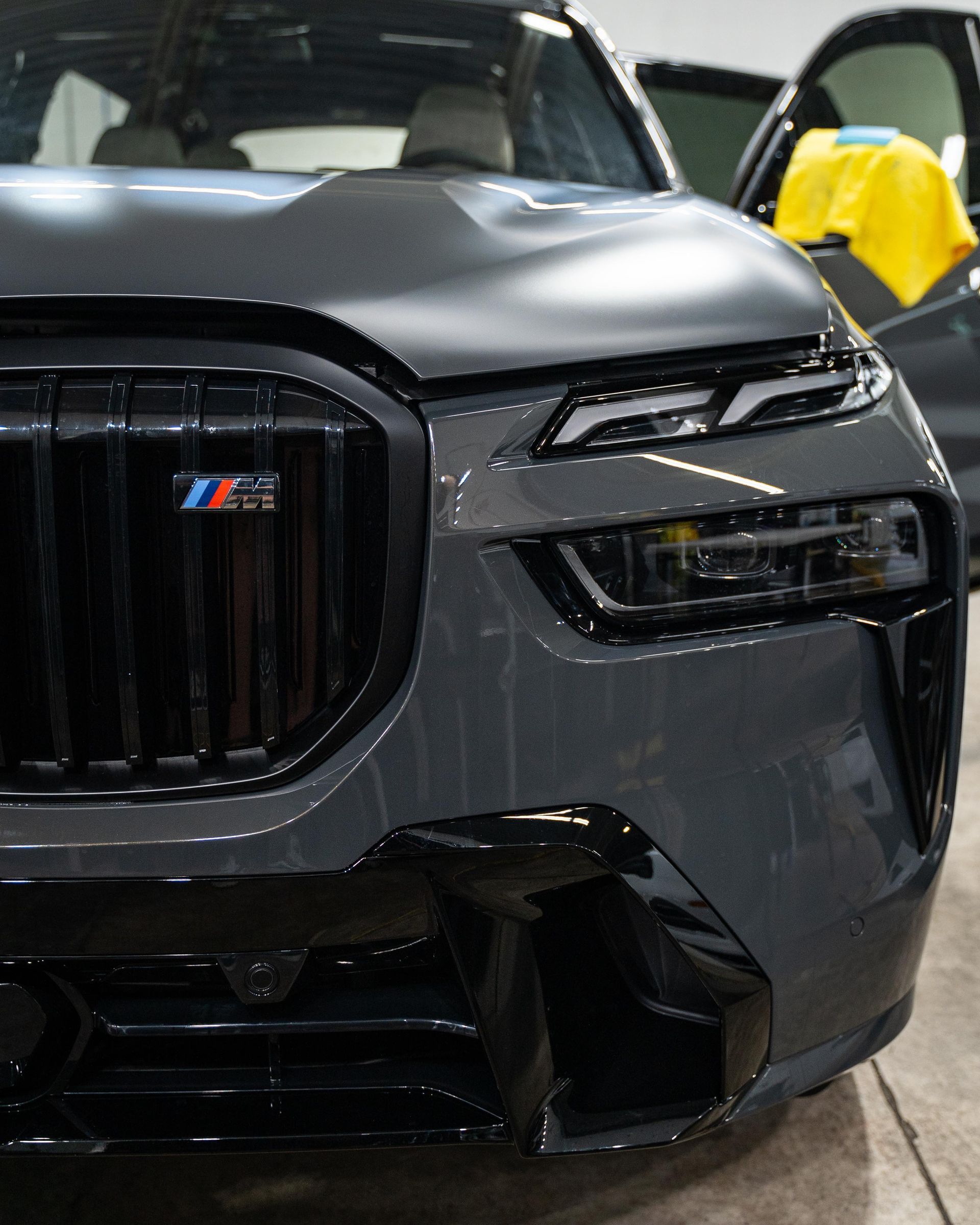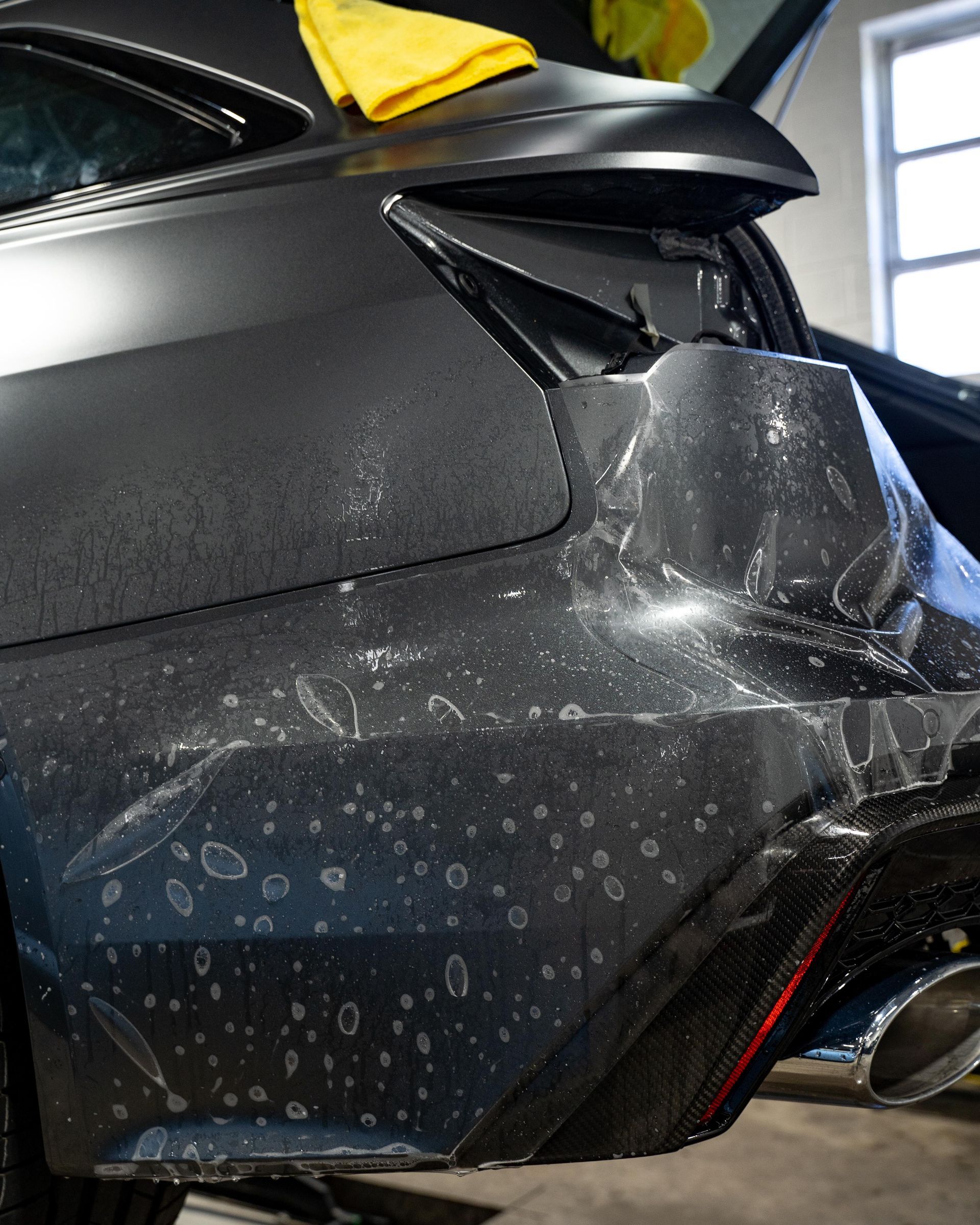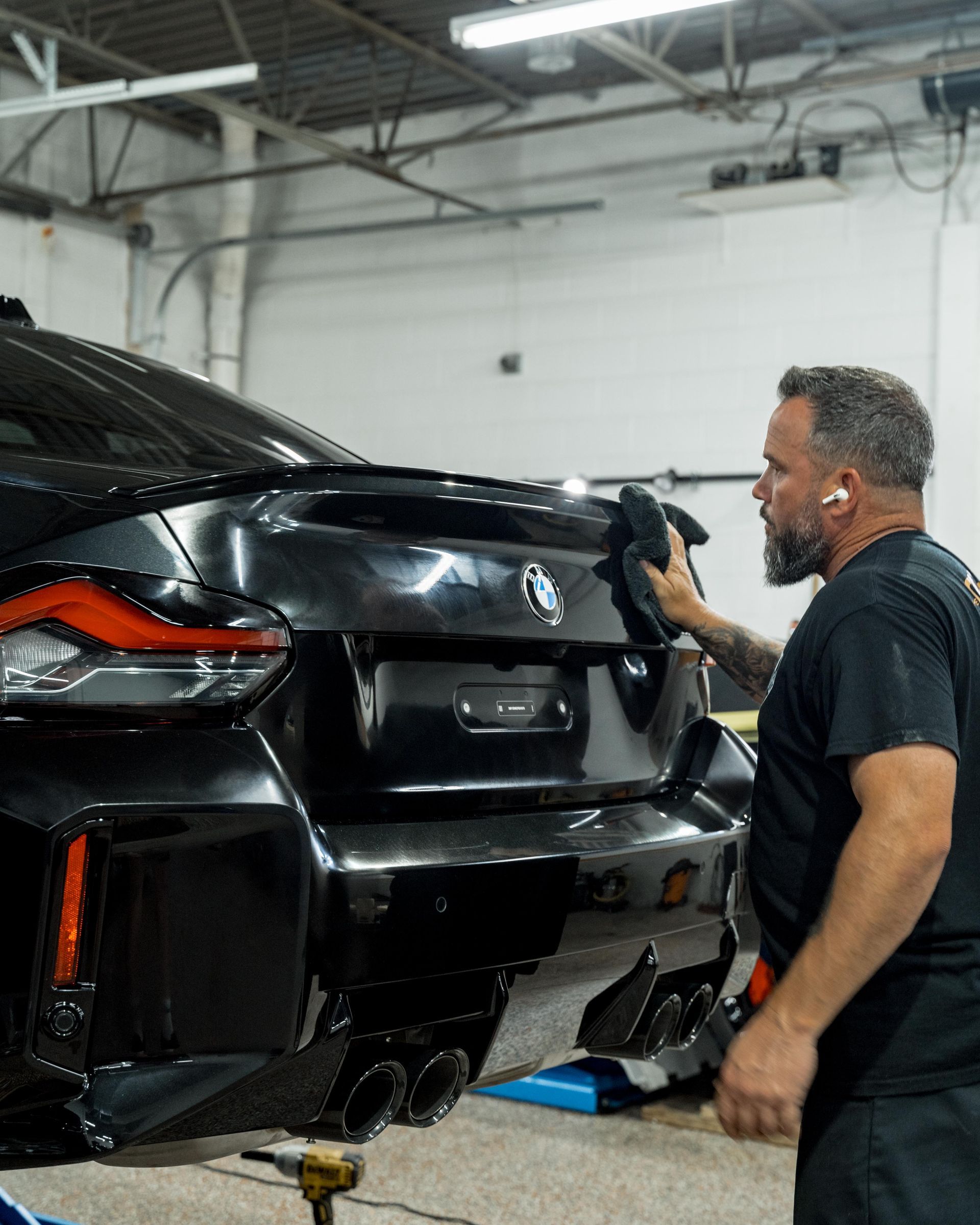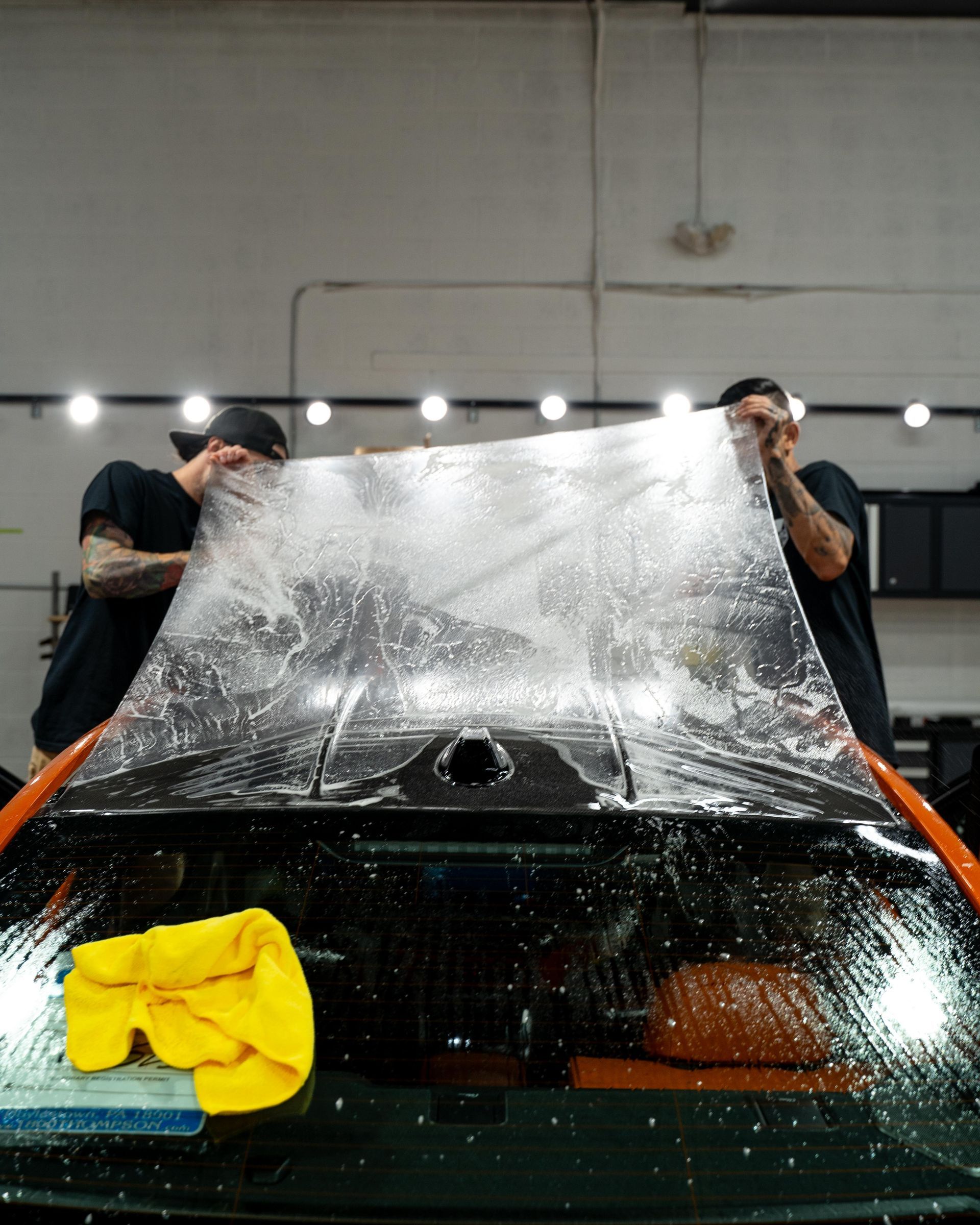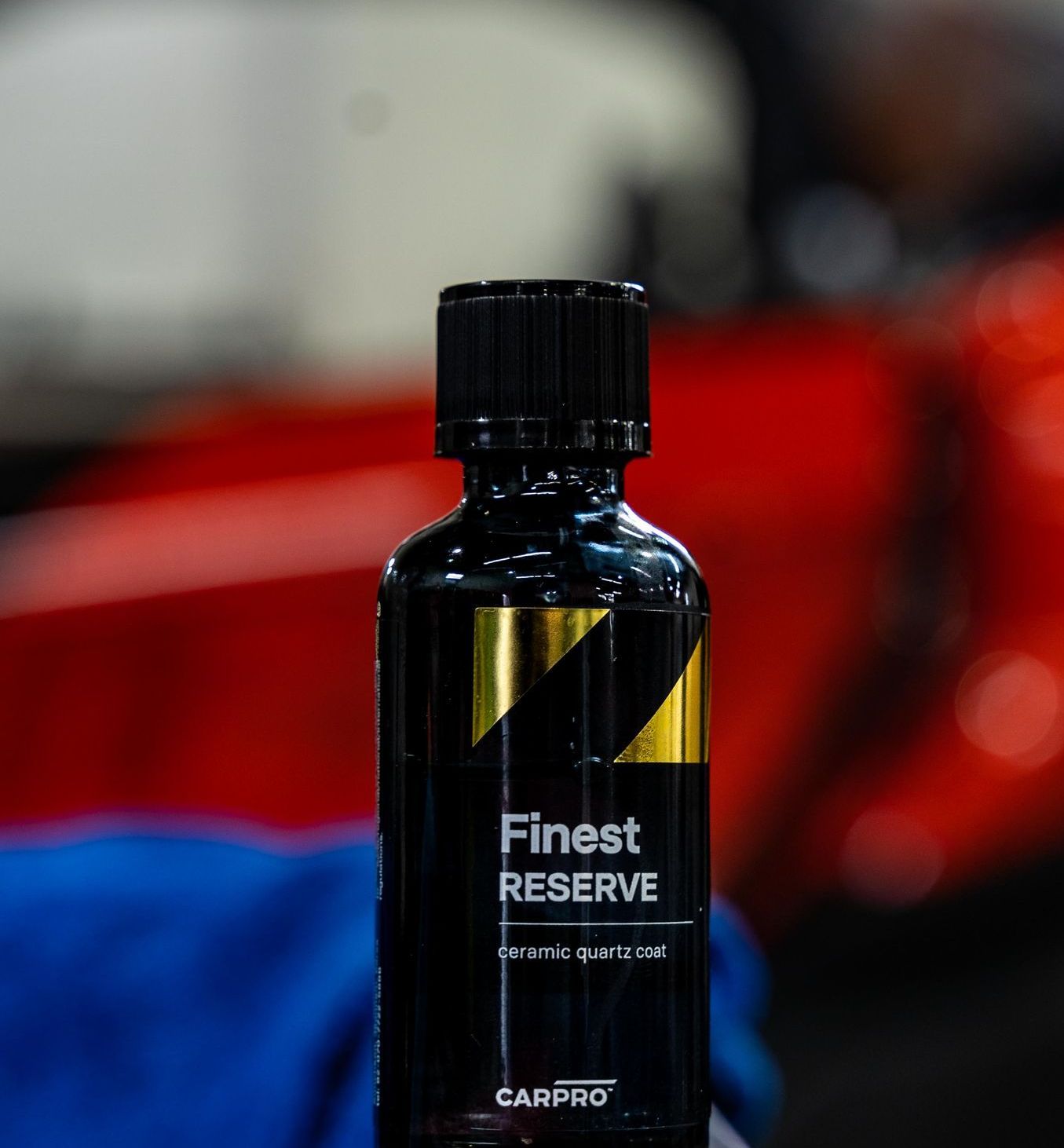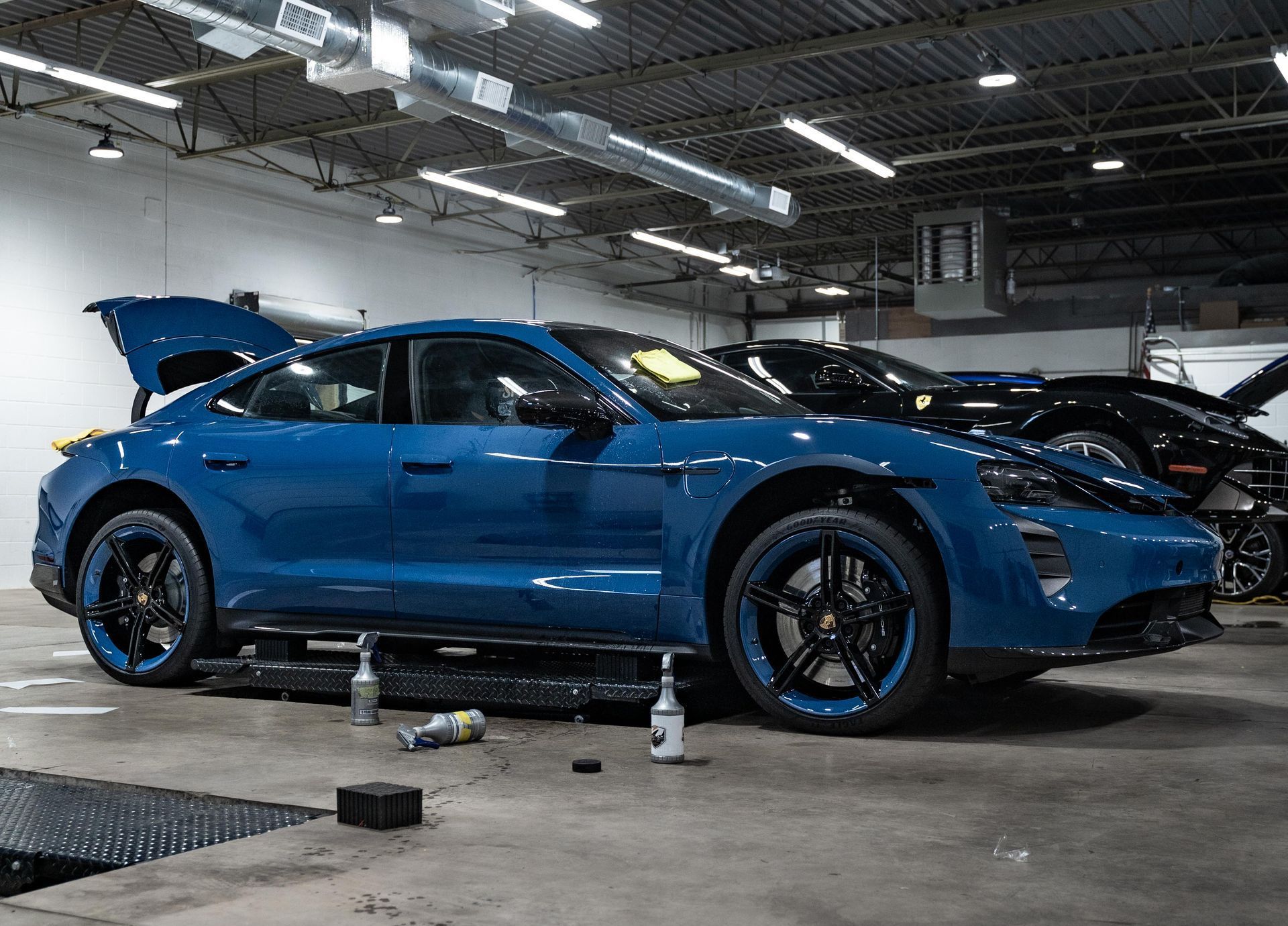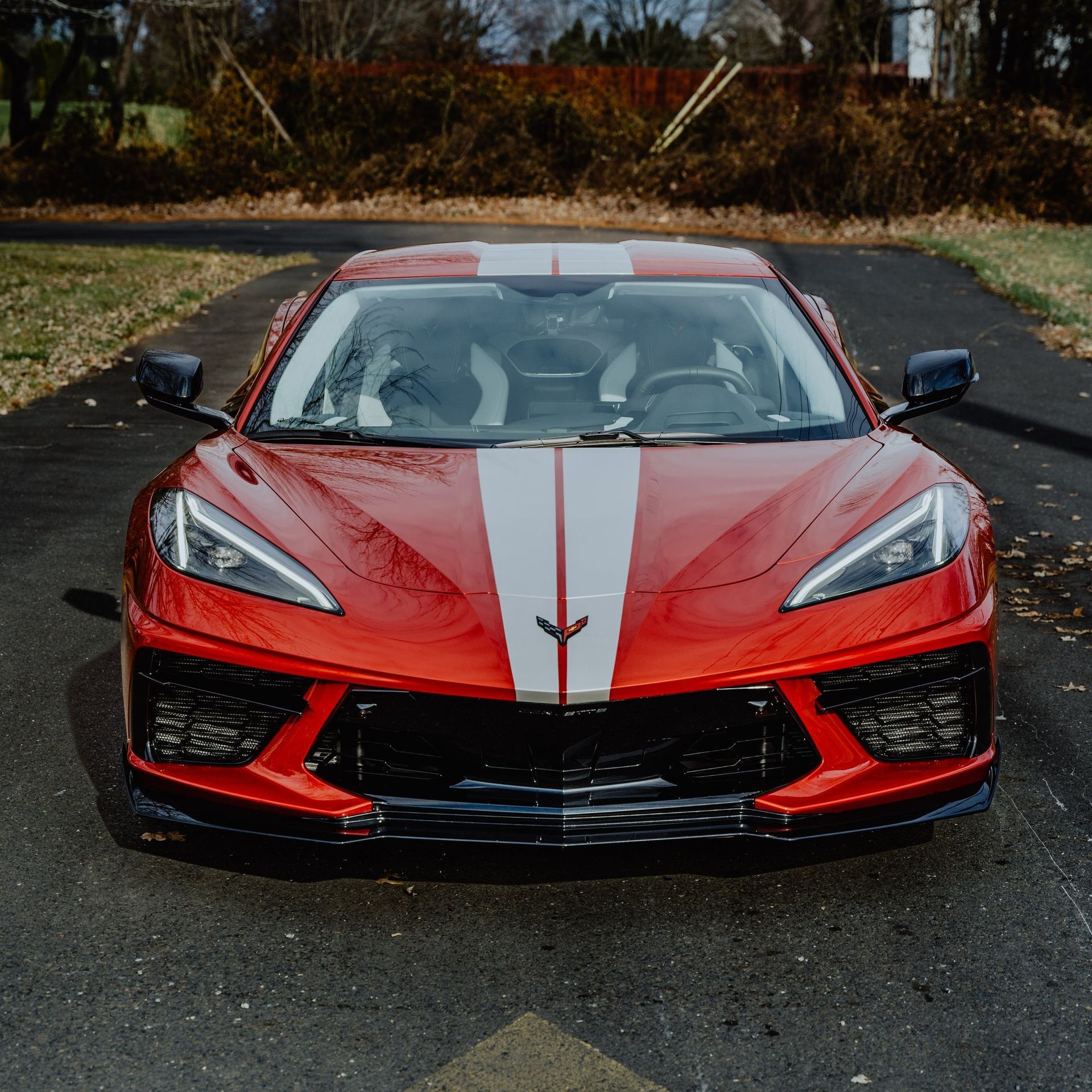How Long Does PPF Installation Take? The Complete Process Explained
CALL (833) 263-6273
While installing paint protection film on your vehicle may appear straightforward, it involves a meticulous blend of art and science. If you’ve ever considered sprucing up your car while keeping it protected from scratches and road debris, you might wonder how long this process takes. The answer might surprise you—it’s not as quick as a pit stop. Whether you’re eyeing a full-body wrap or just targeting vulnerable areas like the hood and bumpers, knowing the installation duration can save you time and set the right expectations. Let’s dive in and break down the timeline for PPF installation so you can plan accordingly and enjoy that shiny new look without any pesky surprises!
The installation of paint protection film typically takes anywhere from 1.5 to 5 hours, depending on the experience of the installer and the specific vehicle sections being covered. For a full frontal install on new vehicles, professional installers generally aim to complete the task in under 2 hours, prioritizing both speed and quality.
Average Duration for PPF Installation
The time it takes to install paint protection film can vary considerably based on several elements. Generally speaking, smaller areas, such as mirrors and bumpers, take about 1.5 hours for installation. Their simplicity means they don't require intricate fitting. Conversely, larger applications, like the full front end of a vehicle, stretch that timeframe up to 5 hours or more due to their complexity. If you're planning on applying PPF to your entire vehicle, be ready to set aside substantially more time. A complete wrap can take anywhere from 10 to 15 hours, often spread out over several days. This extended timeline allows for curative processes and ensures that the film adheres perfectly without any air bubbles—an absolute necessity for achieving that pristine finish.
One might wonder why there’s such a disparity in duration even among professional installers. Factors such as experience play a key role. For instance, a less experienced installer may need around 4-5 hours just to cover the hood, fenders, and mirrors. In contrast, a seasoned professional typically completes the same job in about 2 hours. Their deep understanding of material behavior and efficient tool usage brings speed without sacrificing quality.
Factors Affecting Installation Time
- Installer Experience: The skill level of the person applying the film is perhaps one of the biggest factors affecting installation time.
- Area Size: Larger areas unquestionably require more time due to increased material and careful attention needed for seamless application.
- Complexity of Design: Customized designs or patterns lengthen the installation process because they necessitate careful measuring and cutting.
While it's tempting to rush through the process in hopes of getting back on the road quickly, taking these times seriously pays off in the long run. A hurried installation might save you time initially but could result in noticeable imperfections or peeling down the line. It’s worth noting that weather conditions can further impact curing times post-installation. Installing PPF during humid or windy days can complicate matters more than working on a calm day with room temperature. By understanding the timelines involved in PPF installation, you can better prepare for a seamless process while ensuring your vehicle receives optimal protection.
Key Factors Influencing Installation Time
The type of film you choose can significantly impact how quickly the installation process proceeds. Different brands and types of Paint Protection Film (PPF) boast unique characteristics that affect their application. For instance, films known for their flexibility are easier to manipulate during installation. This ease of stretching allows technicians to work more efficiently, reducing the overall time required. On the other hand, some stiffer films may necessitate a more meticulous approach, thus prolonging the installation period. It's worth thinking about these attributes, as opting for a more user-friendly film might save precious hours during installation. Consider also the skillset of the installer; it is, without doubt, a pivotal factor in how swiftly your PPF can be applied. An experienced installer brings a wealth of knowledge and expertise gained from countless projects. Their familiarity with the nuances of different films—and their ability to troubleshoot issues that may arise—enables them to work rapidly yet effectively.
This efficiency can lead to a noticeable reduction in installation time compared to less experienced technicians. Therefore, investing in a qualified professional not only enhances quality but can also expedite the process significantly. However, the type of vehicle you own introduces another layer of complexity involving time considerations. Vehicle complexity is another crucial determinant when estimating installation duration. A compact car with smooth contours can typically be wrapped much faster than a sports car adorned with intricate curves and sharp lines. The latter requires precision and careful attention to detail, as installers must ensure that every corner and edge is flawlessly covered for optimal protection. For example, if you own a model that features aerodynamic details or custom modifications, be prepared for a longer installation period due to the additional care needed to achieve that perfect fit.
Finally, it's important to consider the role that coverage areas play in this equation. The extent of coverage chosen for your vehicle will undeniably influence how long the installation takes. A basic installation focusing solely on high-impact areas like the front bumper and hood usually takes far less time compared to an extensive full-body wrap. When installers are tasked with covering every inch of paintwork on your vehicle, they must dedicate extra time to ensuring complete adherence and wrinkle-free application across all surfaces. So, it's worthwhile to carefully consider what level of coverage aligns with your needs and budget—knowing that comprehensive coverage means increased installation time but provides enhanced protection. Understanding these key factors—type of film, installer experience, vehicle complexity, and coverage area—will help you anticipate what influences the duration of your PPF journey.
Key Factors Influencing Installation Time
The type of film you choose can significantly impact how quickly the installation process proceeds. Different brands and types of Paint Protection Film (PPF) boast unique characteristics that affect their application. For instance, films known for their flexibility are easier to manipulate during installation. This ease of stretching allows technicians to work more efficiently, reducing the overall time required. On the other hand, some stiffer films may necessitate a more meticulous approach, thus prolonging the installation period. It's worth thinking about these attributes, as opting for a more user-friendly film might save precious hours during installation. Consider also the skillset of the installer; it is, without doubt, a pivotal factor in how swiftly your PPF can be applied. An experienced installer brings a wealth of knowledge and expertise gained from countless projects. Their familiarity with the nuances of different films—and their ability to troubleshoot issues that may arise—enables them to work rapidly yet effectively.
This efficiency can lead to a noticeable reduction in installation time compared to less experienced technicians. Therefore, investing in a qualified professional not only enhances quality but can also expedite the process significantly. However, the type of vehicle you own introduces another layer of complexity involving time considerations. Vehicle complexity is another crucial determinant when estimating installation duration. A compact car with smooth contours can typically be wrapped much faster than a sports car adorned with intricate curves and sharp lines. The latter requires precision and careful attention to detail, as installers must ensure that every corner and edge is flawlessly covered for optimal protection. For example, if you own a model that features aerodynamic details or custom modifications, be prepared for a longer installation period due to the additional care needed to achieve that perfect fit.
Finally, it's important to consider the role that coverage areas play in this equation. The extent of coverage chosen for your vehicle will undeniably influence how long the installation takes. A basic installation focusing solely on high-impact areas like the front bumper and hood usually takes far less time compared to an extensive full-body wrap. When installers are tasked with covering every inch of paintwork on your vehicle, they must dedicate extra time to ensuring complete adherence and wrinkle-free application across all surfaces. So, it's worthwhile to carefully consider what level of coverage aligns with your needs and budget—knowing that comprehensive coverage means increased installation time but provides enhanced protection. Understanding these key factors—type of film, installer experience, vehicle complexity, and coverage area—will help you anticipate what influences the duration of your PPF journey.
Step-by-Step PPF Installation Process
When it comes to preserving your vehicle’s finish, few options are as effective and long-lasting as paint protection film. This transparent, high-performance layer shields your car from rock chips, road debris, and environmental contaminants while maintaining a sleek, glossy appearance. However, achieving those flawless results doesn’t happen by accident—it requires a detailed and methodical installation process handled by trained professionals. Here's a breakdown of the step-by-step procedure so you can better appreciate the precision and care that go into protecting your investment:
- Preparation: An installer begins by thoroughly washing the vehicle to remove any dirt, dust, or grime that may cause imperfections in the outcome. The procedure isn't just a quick rinse; it involves using the right soaps and techniques to ensure every part of the surface is cleaned. Following this wash, a decontamination process typically involving clay bars helps eliminate stubborn contaminants that could stick under the film, ensuring that your PPF adheres flawlessly.
- Cutting the Film: Using a computer plotter, installers cut PPF to match the exact dimensions of the vehicle's panels. This procedure guarantees that each piece fits perfectly and streamlines the entire installation process. When a cut is done correctly, less waste is produced and installers spend less time trimming and adjusting while applying. Customers should know that this careful preparation can greatly improve quality and speed.
- Alignment: Each cut piece of film is carefully positioned on the vehicle's surface, ensuring it's perfectly aligned before any adhesive comes into play. The process requires practice and a keen eye because even slight misalignments can result in issues later on. Installers often check multiple angles, frequently stepping back to visualize how everything will look once applied. Getting this right avoids unnecessary adjustments later and enhances aesthetic appeal.
- Application: The magic of installation happens here with the wet installation method. Using a slip solution allows installers to easily maneuver each piece of film into place without risk of it sticking prematurely. This method permits repositioning until they achieve perfection—another reason why savvy customers should never rush their installation appointment. It also aids in minimizing air bubbles trapped beneath the surface, which can compromise protection effectiveness over time.
- Securing the Film: Installers use squeegees to push out any remaining bubbles or creases while ensuring an airtight seal against moisture and debris. The technique used plays a significant role in how well the PPF will perform over time. Professional installers understand that thoroughly securing the film ensures better longevity and maintains its visual integrity, which is something every car owner desires.
- Finishing Touches: After ensuring that everything is smooth and sealed, installers will address the edges of the film by either wrapping them around seams or trimming excess material for a clean finish. The final inspection checks for imperfections or missed spots to guarantee that every inch looks flawless. That little bit of extra care at this stage pays dividends in how your vehicle looks and performs with its new protective layer installed.
Ultimately, a meticulous PPF installation turns a protective layer into a seamless extension of your vehicle’s design. By following each of these stages—from careful surface preparation to the final inspection—you ensure that the film not only looks impeccable but performs reliably for years to come.
Tips for a Faster Installation
First and foremost, optimizing your workspace is crucial. Think of your workspace as an extension of your mind; clutter can lead to confusion and delay. By maintaining a clean and organized area, you minimize the time spent hunting down tools or supplies. Ensure that you have all necessary items, such as squeegees, slip solution, heat guns, and PPF, within easy reach. This setup allows for seamless transitions between tasks, letting your focus remain on the installation itself rather than on forage missions around the garage. However, maintaining order is not the only benefit; the utilization of efficient tools can significantly enhance the process. Choosing high-quality squeegees and pre-cut film templates speeds up the application process tremendously. A sturdy squeegee with a comfortable grip will save your hands from fatigue during lengthy installations. Furthermore, pre-cut film kits eliminate uncertainty by precisely fitting specific vehicle models, thereby minimizing the risk of misalignment or misplaced cuts. It's akin to using a tailor-made suit versus buying a generic one off the rack—one simply fits better.
Moving forward, proper preparation ahead of time plays an equally vital role in enhancing efficiency. Before even starting your installation, take the time to precut the film and set up your tools in advance. This foresight can save substantial amounts of time later on because you won’t be scrambling mid-installation. Imagine being fully equipped—each piece ready for action like a well-rehearsed theater cast—there’s no room for mistakes. Now, addressing more complex areas of your vehicle first can further enhance your efficiency during installation. Tackling complicated sections with tight curves or intricate details at the beginning allows you to allocate ample time and focus to perfect these challenging aspects. By dealing with these tricky areas early on while you’re still fresh and attentive, you prevent the last-minute rush later when you may feel fatigued or distracted. You’ll find satisfaction in seeing these parts completed right at the outset; it builds momentum for the rest of your project. Keeping these tips in mind streamlines your PPF installation experience and helps achieve outstanding results efficiently and confidently.
Quality vs. Speed in Installation
When it comes to installing PPF, the friction between speed and quality often sparks spirited discussions among installers. Some installers advocate for a speedy installation, believing that efficiency and effectiveness are mutually beneficial. However, others argue that haste can lead to serious imperfections—anything from unsightly bubbles to misalignments that may compromise the film's longevity. Hurrying may save time, but it can lead to chips and scratches, which can be disappointing. Those who take the extra time often end up delivering work that looks great immediately and lasts longer. For instance, many expert installers recommend aiming for about two hours for a frontal install on new vehicles, striking a careful balance between attention to detail and operational efficiency. Taking the time needed for proper PPF installation can save clients both money and frustration down the line.
An eye for detail becomes pivotal during installations. Without proper alignment or adequate attention, even high-quality films may start to lift or discolor, which is precisely what you want to avoid. Moreover, if corners are cut during preparation—such as insufficient cleaning of the vehicle surface before applying the film—the outcome won't hold up well against wear and tear. Professional installations are known to increase a vehicle's resale price. This point underscores how investing time in quality installation pays dividends—not just in terms of protection but also in tangible value when it's time to sell your car. Prioritizing these elements will undeniably lead to better overall results for your investment in PPF.
Ensuring a Smooth PPF Application
Achieving a smooth and professional finish during a paint protection film installation requires adherence to certain best practices that can significantly impact the outcome. It’s not merely about slapping on the film; it’s an art that combines skill, experience, and environmental factors. The first aspect to consider is maintaining a consistent technique throughout the application. This means applying uniform pressure while squeegeeing the film onto the surface. When installers maintain consistent pressure, they help eliminate air bubbles trapped underneath, which may lead to an unsightly appearance or even compromise the film's effectiveness over time.
Once you have your technique down, the next crucial factor is the environment in which you perform the installation. The right environment plays a pivotal role in ensuring a successful PPF application. Performing the installation in a temperature-controlled, dust-free area minimizes contamination risks and improves adhesion. High humidity or extreme temperatures can adversely affect adhesive properties, leading to bubbles or misalignment once applied. Ideally, installers should aim for a space where temperatures are between 60°F and 80°F (15°C to 27°C) with limited movement to keep airborne debris at bay. Even sweeping or moving around furniture too vigorously could stir up dust particles that find their way under the film.
Focusing on proper training and using high-quality tools cannot be overlooked. Adequate training and tools are essential for success in PPF installation. Investing in proper training ensures that installers understand the nuances of both technique and material behavior during application. Experienced professionals know how to handle various films and can adapt their methods accordingly. Additionally, having high-quality tools—such as precision squeegees, cutting knives, and heat guns—allows for better precision in trimming excess film without damaging the surface beneath. Installers should strive to strengthen their skills continuously through workshops or practice sessions because excellence is an ongoing journey.
In summary, achieving exceptional results starts with consistent technique during application, working in an optimal environment, and being well-trained with quality tools at hand. Each element contributes to creating a high-quality end result that looks professional and ensures the longevity of the protective layer over your vehicle’s exterior. By focusing on these key components—technique, environment, training, and tools—you can maximize the effectiveness of your PPF installation for a lasting finish.
Exceptional PPF Services in Voorhees, NJ
Ready to defend your vehicle against chips, scratches, and road wear? Menard Premium Detailing in Voorhees, NJ, delivers
top-tier paint protection film services
designed for long-lasting durability and a flawless finish. Whether you're preserving a new ride or protecting a prized investment, our expert team ensures every panel is perfectly covered using industry-leading film technology. Don't let daily driving dull your paint—schedule your PPF consultation with Menard Premium Detailing today and drive with confidence.

